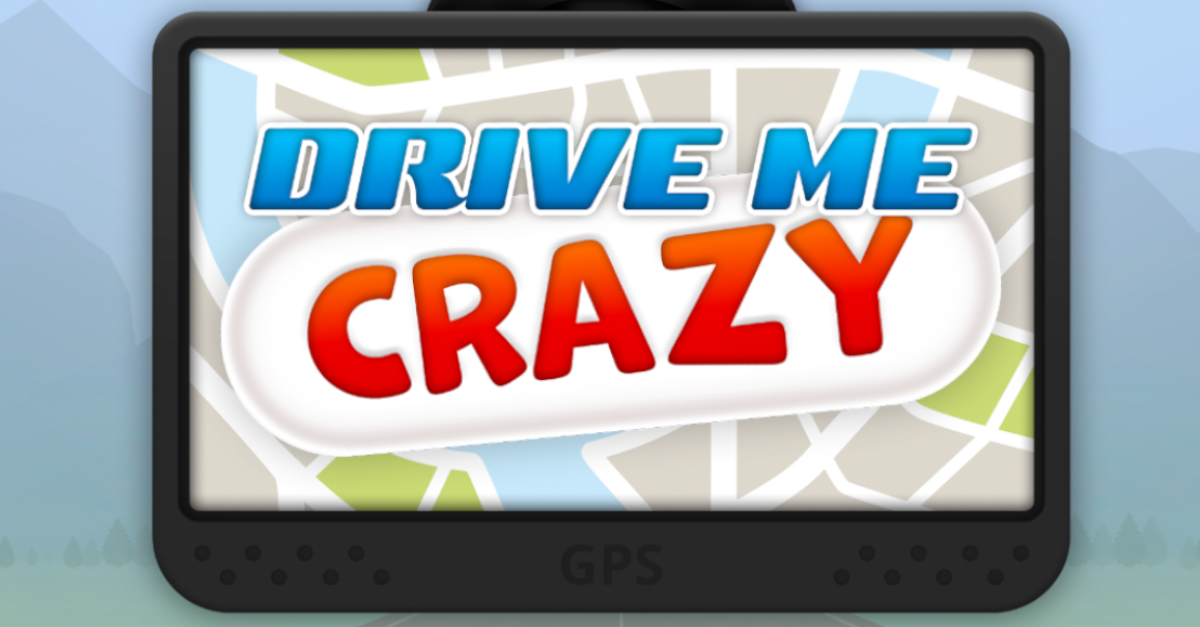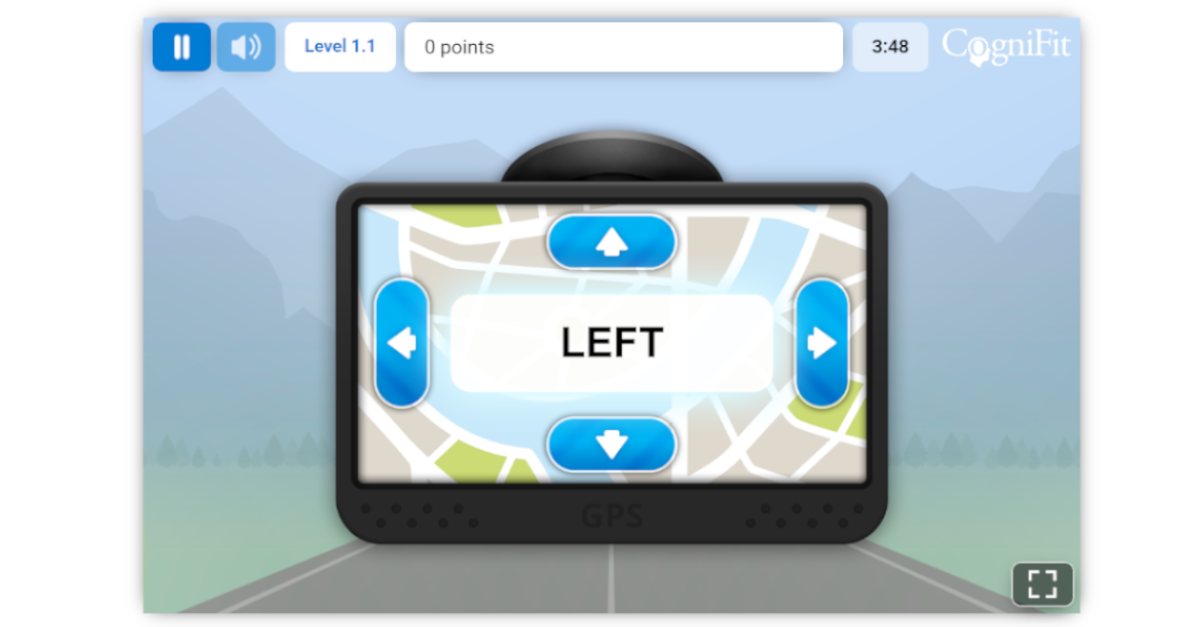
Drive Me Crazy Game – Directions Gone Insane!
No, Drive Me Crazy is not a racing game. But the speed that some levels get to can feel like you’re behind the wheel of a Bugatti going down an icy hill while someone is screaming distracting noises in your ear.
So, what is this game, and how does its simple mechanics help Auditory perception, Contextual Memory, Inhibition, and Shifting abilities? Let’s take a closer look!
How To Play Drive Me Crazy
First, you’ll be given an auditory check. If you can hear the tone, you can go ahead to the next screen. Here, you’ll be asked to select a level (by moving the upside-down-tear drop) on the right side of the screen.
You’ll be given a quick tutorial on that level. Right after, you’ll jump into gameplay.
On lower levels, you’ll have plenty of help. The screen will either show the word left, right, up or down. Then, all you need to do is click the corresponding arrow. You will also get audio prompts. If the recording says, “up” just press the up arrow. Sounds easy, yeah? And you would be quite correct. And easy levels are always something we suggest starting with.
Because it’s on the harder levels that the game really earns its name.
At the highest difficulty, you’ll hear four directions. However, you’ll also see conflicting information. For example. The task might be to “remember the four spoken directions” but the screen will flash opposite directions, or even numbers, or completely different words.
Afterward, you’ll have to click the arrows FAST. And we mean REALLY fast. Even a couple seconds delay and the round will count as failed.
But don’t worry. There’s no rush or need to push yourself to that level any time soon, if at all. Stay at wherever level you feel is comfortable. Still, make sure it’s challenging enough to keep your brain building those neural pathways!

What Brain Functions Are Flexed During Driving Me Crazy?
1. Auditory perception
Our brain interprets so much information (stimuli) around us. One of those is auditory information.
So, when the phone rings, we know to pick it up. It also lets us know if we recognize the other person on the other end or not. Sound waves zip through the air, reach certain areas of our inner ear, and then are sent to parts of the brain to be processed.
We are also able to understand different tones, timbres, durations, and intensities. But all of these are just mere details.
- Our brains must be able to first “detect” the sound wave.
- Next, we need to be able to separate it from other competing noises around us.
- After that, we must be able to recognize it – is it your mom asking you to clean your room again or the strum of a guitar?
- Finally, our brains need to “comprehend” the meaning of the sound. A good example is the ring of a bell. To students, it’s a sign that class is over. To others, a signal to go to church.
2. Contextual Memory
Our minds have so many different kinds of memory it’s crazy! Also, each one has a very necessary place in the impressive neurological dance we exist in every moment.
Contextual Memory is part of long-term memory. But it’s not something that lets you learn and remember a new language says cognitive science.
Have you ever been around a smell that triggered a certain memory that made you happily nostalgic? Or is there a song that you can’t stand listening to because it’s connected to a heartbreaking memory?
This is Contextual Memory.
And as painful as it might be sometimes, it’s one of the reasons we can learn and retain things more efficiently. So, it’s a very important brain function to nurture.

3. Inhibition
Have you ever been driving, and someone cut you off? All you wanted to do was slam on your horn, scream at the top of your lungs that the driver was a “so-and-so”? And you were ready to cut him off, jump out of your car, and bonk them on the head?
First, please don’t do that.
Second, if you didn’t do that, you have excellent Inhibition. However, keeping your temper isn’t all that this brain function is essential for. This skill lets us have better control and concentration in our lives. In fact, it’s one of our “Executive Functions” – key processes (key functions that allow goal setting and planning).
People with poor Inhibition skills might have these problems:
- Can’t concentrate during school or work
- More traffic altercations
- Have more of a negative mindset
- Keeping their calm during annoyances
- Trouble having a fluid conversation
4. Shifting
It’s the wonderful process of adaptation!
Yep, “Shifting” is what gives humans the ability to change to whatever happens around us. However, it’s important to know that cognitive flexibility refers to the ability to adapt to a change, while mental shifting is the process that makes it possible to adapt to the change. (Yes, English is tricky, but it really boils down to “can” vs “do”, if that makes sense).
Not only can you adapt quickly, but you can also tolerate changes well or move from one task to another with relative ease. If you have great Shifting skills you can see from different points of view and recognize hidden relationships. It helps with achieving goals, supporting intelligence, and much more empathetic.
Drive Me Crazy Conclusion
As we can see, Drive Me Crazy takes some very important mental skills and mixes them all together. Inhibition makes you not click the buttons too fast and get wrong answers. The audio clips and words help your Contextual Memory with you link them with what you see on the screen. So, you can see how it all works?
The great thing is that building better brain function doesn’t take as much as people think. Just 3 sessions a week and 20 minutes per session and you’ll be on the road to a rocking brain! Check out these brain games and more at CogniFit.












